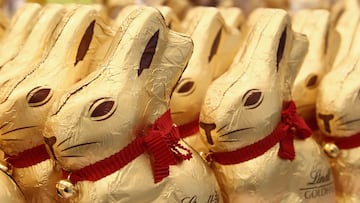What is the origin of the Easter Bunny?
The bunny is as indelibly linked to Easter as chocolate eggs but where did this egg-cellent tradition originate?


As Easter approaches, children will be eagerly await the arrival of the Easter Bunny, a whimsical creature leaving behind a trail of colorful eggs. The Easter Bunny’s journey is a blend of pagan symbolism, Christian adaptation, and modern-day commercialisation.
The roots of the Easter Bunny can be traced back to pre-Christian Europe. Many cultures associated springtime with fertility and new life. The hare, known for its energetic breeding habits, became a symbol of this season. In particular, the celebration of Eostre, a Germanic goddess of fertility, often featured a hare as her companion.
Fast forward to the early centuries of Christianity. The celebration of Easter, commemorating Jesus’ resurrection, became firmly established. However, some pagan customs lingered, including the symbolism of the hare. Over time, these traditions began to merge.
A Germanic tradition
In Germany, the Osterhase (Easter Hare) emerged as a benevolent creature that judged children’s behavior and rewarded the good ones with coloured eggs – a symbol of rebirth in Christianity.
By the 17th century, German immigrants brought these traditions to America, particularly in Pennsylvania Dutch communities. Here, the Osterhase transformed into the Easter Bunny we know today. Children built nests for the bunny to lay its colored eggs, a tradition that morphed into the Easter baskets we see today.
Related stories
The 20th century saw the Easter Bunny’s rise as a popular icon. German printers began depicting the bunny on Easter postcards. In the US, the commercialisation of Easter boomed, with sweet companies capitalising on the association between rabbits and eggs. Chocolate bunnies became a mainstay of Easter celebrations, solidifying the bunny’s role as a bringer of sweet treats.
The Easter Bunny’s evolution reflects a fascinating cultural exchange. From a symbol of pagan fertility to a Christian judge of good behavior, and finally, to a modern-day candy deliverer, the Easter Bunny has adapted and endured.

